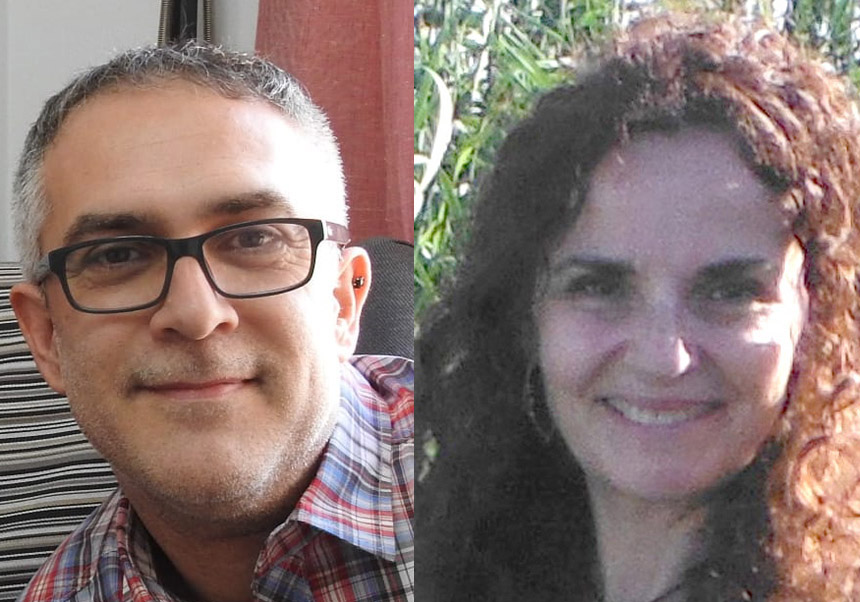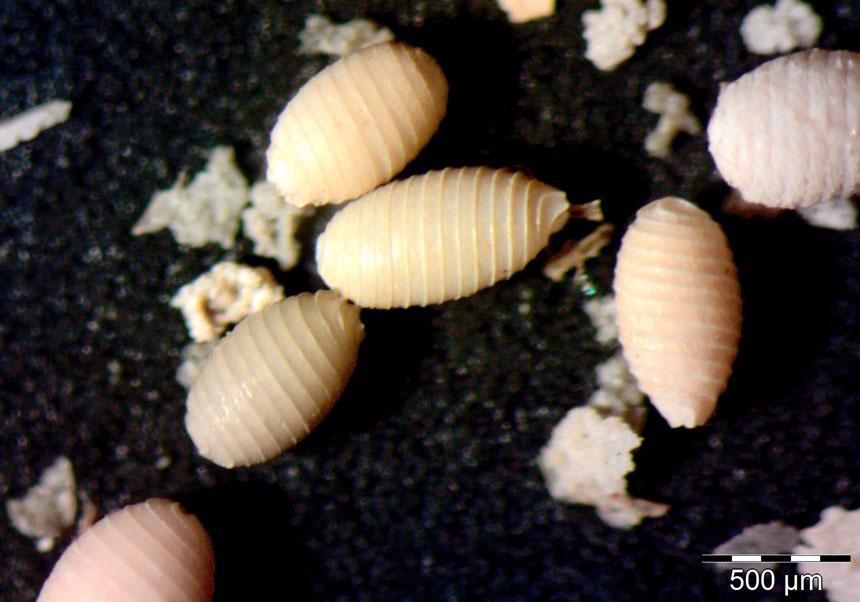The chronology of the most recent volcanic eruptions in the Iberian Peninsula is reduced to 8,000 years ago
- Scientific Culture and Innovation Unit
- June 6th, 2023

Maria A. Rodrigo and Francesc Mesquita, researchers at the Cavanilles Institute of Biodiversity and Evolutionary Biology (ICBiBE) of the University of Valencia, have participated in the discovery that the volcanic activity of La Garrotxa (Girona) lasted only 8,300 years (it was thought that volcanism ceased about 13,000 years ago), which constitutes the most recent chapter of this phenomenon in the entire Iberian Peninsula. The results have been published in the prestigious journals The Holocene and Scientific Reports.
The study, in which the University of Burgos, IPHES-CERCA, IDAEA-CSIC, the Autonomous University of Barcelona and the University of Montpellier also participate, has been carried out on a 14-meter-deep survey in the Vall d’en Bas (Girona) and has revealed very interesting and unpublished data on the paleoclimatic and paleoenvironmental evolution of the La Garrotxa Volcanic Field (Girona).
“We have been able to reconstruct the paleoclimatic evolution of the last 13,000 years in the NE of the Iberian Peninsula, the volcanism of La Garrotxa, and the impact of these eruptions on the plant and lake ecosystems and on the Mesolithic human populations of the area”, Francesc Mesquita and Maria A. Rodrigo point out.
Thus, in the area closest to the zone of volcanic activity (up to 50 km) and during eruption events, different processes such as lava flows, deposit of volcanic materials, ash rain, gas emanation, aerosols, pyroclastic flows and earthquakes, affected flora and fauna, as well as air and water quality, and constituted a danger to human populations. In this sense, and based on the study of nearby archaeological sites, it can be seen that the closest hunter-gatherer populations left the area temporarily during periods of high volcanic activity, to later return in quiet times, which demonstrates a high capacity reorganisation and adaptation.
This volcanic activity caused several volcanic flows to block the valley of the Fluvià river near Olot and to form a large lake on the plain that is now known as Pla de les Preses. The sedimentary sequence of the studied borehole records local and regional signals related to the geomorphological, paleoclimatological and volcanic dynamics of the La Garrotxa volcanic field.
The geological and biological indicators analysed (aquatic organisms, pollen record, sedimentology and geochemistry) report mainly local hydrological variations, which have been related to the main climate trends of the Holocene and late Pleistocene, including several abrupt climate changes that offer clues about the processes that could be unleashed in the context of the current global warming.
Articles:
Iriarte, E., Revelles, J., Finsinger, W., Mesquita-Joanes, F., Rodrigo, M. A., Burjachs, F., Expósito, I., Marti-Molist, J., Planagumà, Ll., Alcalde, G., Saña, M. (2023). «Youngest Iberian Holocene volcanic eruptions and paleoenvironmental evolution of a barrier-paleolake in the Garrotxa Volcanic Field (NE Spain)». The Holocene. https://journals.sagepub.com/doi/10.1177/09596836231169989
Revelles, J., Marti-Molist, J., Burjachs, F., Finsinger, W., Iriarte, E., Mesquita-Joanes, F., Pla-Rabes, S., Rodrigo, M. A., Alcalde, G., Saña, M. (2023). «Socio-ecological impact of monogenetic volcanism in the La Garrotxa Volcanic Field (NE Iberia)». Scientific Reports. https://www.nature.com/articles/s41598-023-35072-0
Annex photo caption:
Remains of charophyte algae present in the lake sediments studied. Oospores of these macroalgae covered with calcium carbonate (gyrogonites). Photography: Maria A. Rodrigo.
File in: Investigació a la UV , Institut Cavanilles de Biodiversitat i Biologia Evolutiva , Grups de recerca , Producció científica , Internacionalització recerca , Difusió i comunicació científica , Recerca, innovació i transferència



















